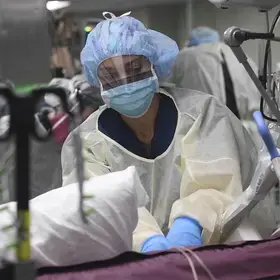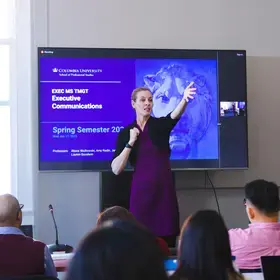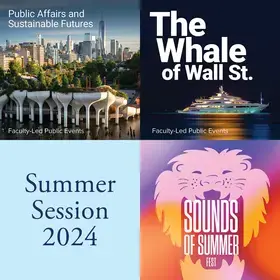As part of the SPS Election 2020 Speaker Series, Michelle Nickerson, Associate Professor of History at Loyola University Chicago, led an insightful discussion on the evolution of journalism through the history of the United States and the rise of fake news over the years. Michael Nutter, David N. Dinkins Professor of Professional Practice in Urban and Public Affairs at Columbia SIPA and former mayor of Philadelphia, will close the series on Tuesday, October 27.
Nickerson’s talk covered the history of fake news and misinformation across three major periods of American history: the early years of the nation when the news played a key role in shaping the American consciousness, the mid- to late- 19th century that marked a new phase of news that was more sensationalistic and the contemporary era of professional journalism.
In the first stage, the newspaper acted as a reflection of the government. “So what this first newspaper did is it printed articles that were favorable not only to the government but to certain policies like establishing public credit,” said Nickerson. The newspaper of this era was very close to the government’s interests and went as far as to become the “forerunner of the Government Printing Office.” The American public did not favor this merger between the newspaper and the government.
As time went by, newspapers gradually became indicative of political parties and/or movements, Nickerson explained. “To be a newspaper was to be a party; to be a successful part of your movement, one had to have a successful newspaper or chain or network of newspapers at that time.” Essentially, newspapers primarily served an advocacy function, forging a palpable link between the parties and causes and their followers.
As time went by—and with technology revolutionizing print—newspapers transformed into a mass medium driven by the latest news. As Nickerson put it, “one of the ways that papers competed with each other in the middle of the 19th century was now by chasing the news, instead of waiting for it.” The newspapers became a resource for everyone in the U.S.—beyond the elites and higher class Americans. The affordability of the press also granted newspaper access to immigrants and women, making the media available to a wider demographic.
As competition grew, sensationalism quickly took over the press and by extension, laid the groundwork for the fake news issue the U.S. is facing today. “It was necessary to make news entertaining and that leads to what we might identify as the first instances of fake news,” said Nickerson. At the time, sensational news didn’t just propagate misinformation—often, they were hoaxes with ulterior motives in mind. Sensationalism also went hand in hand with stories about poverty, destitution and violence, she noted.
To recover the American public’s dwindling trust in the press, the industry gradually began developing its own code of ethics in the 20th century. In Nickerson’s words, “This launches an era of professionalization when newspapers start making accuracy and objectivity into not just commodities, but standards of professional conduct.” The new code was driven by the principle of putting the best interest of society ahead of profit, as well as the need for objectivity and truthfulness in reporting.
Despite the aspiration for the absolute truth, even today, fake news has the ability to spread easily and quickly. “Fake news was not born from the internet, but we do have new actors, new institutions and new mechanisms for its player information,” Nickerson said. Whether it’s fabricated intelligence or technology that lowers the barrier for the spread of false stories, the news issues the U.S. faces today are simultaneously alike and different from those years ago—and how the issue is handled comes down to the “ability of people to see the whole picture of a particular circumstance or an event.”
Nickerson concluded her lecture with a challenge for the Columbia SPS community to understand that, while it’s impossible to comprehend the full extent of any circumstance or event, it’s important to remain aware of the individual confirmation biases that determine which parts of the story each person chooses to focus on.


